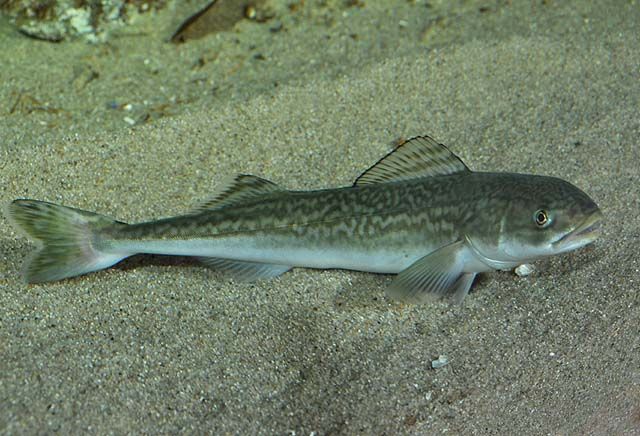Council directs analysis to focus on gear switching impacts
The Council wants to better understand the impacts of limiting gear switching (the use of fixed gear in the trawl individual fishing quota fishery) in order to help identify the maximum level of gear switching that should be allowed. In November, the Council directed analysts to report on this issue.
Some members of industry have long-standing concerns about the impacts of gear switching on trawlers’ ability to harvest the full trawl quota. Specifically, there is concern that if gear switchers use sablefish quota pounds, those quota pounds would not be available to trawlers, who need them to catch other stocks that are intermixed with sablefish.
The Council is tentatively scheduled to discuss gear switching maximum levels in April 2021 before selecting a range of alternatives in June 2021.
NMFS to modify cost recovery regulations
National Marine Fisheries Service (NMFS) intends to modify cost recovery regulations to specify that cost recovery from the at-sea fleet is based on whiting catch only, rather than on all species delivered. The Council will make a final recommendation on this change in April 2021.
On a related note, next March the Council will consider whether to prioritize reconstituting its Cost Recovery Committee. The Committee would work with NMFS to evaluate how the trawl catch share cost recovery program was conducted.
NMFS reports on seabird bycatch
NMFS reported on seabird bycatch in November, summarizing interactions between U.S. West Coast fisheries and seabirds and presenting estimates of fleet-wide bycatch for seabirds for the years 2002-2018.
The report covers lethal and non-lethal interactions, as well as sightings, for six fisheries using hook-and-line gear, eight fisheries using trawl gear, and five fisheries using pot gear.
The Pacific halibut fishery had relatively high black-footed albatross bycatch, and the California ridgeback prawn fishery had relatively high bycatch of Brandt’s cormorant compared to other fisheries. No birds were observed as bycatch in the California sea cucumber fishery.
A total of 47 bird species interacted with, or were sighted in, these fisheries over the 2002- 2018 period, up from 41 in the last report in 2018. Thirteen of these species are considered endangered, threatened, vulnerable, or near threatened.
All three north Pacific albatross species interact with these fisheries: black-footed, Laysan, and the Endangered Species Act (ESA)-listed short-tailed albatross. To date, only one short-tailed albatross has been observed taken by these fisheries, and the estimated mortality is generally less than 1 individual per year. However, black-footed albatross are caught annually in a number of fisheries, primarily hook-and-line. Laysan albatross have occasionally been taken by fisheries reported here, but the mortalities are few and infrequent.
The report did not cover recreational and tribal fisheries.
Council considers inseason adjustments, whiting set-asides
At its November meeting, the Council considered inseason adjustments for 2020 and 2021 groundfish fisheries and 2021 Pacific whiting set-asides for research and pink shrimp fisheries. The Council did not recommend inseason changes for the remainder of 2020, but did adopt the following adjustments for 2021 (as detailed in the Groundfish Management Team (GMT) report):
- Sablefish north of 36° North latitude (N. lat.) daily-trip-limit (DTL): no changes to the limited entry fixed gear fishery. For open access, limits were changed to 600 lbs. per day, or 1 landing per week of up to 2,000 lbs., not to exceed 4,000 lbs per 2 months.
- Sablefish south of 36° N. lat. DTL: the limited entry fixed gear limit was changed to 2,500 lbs per week. The open access limit was changed to 2,000 lbs. per week, not to exceed 6,000 lbs. per 2 months.
- Lingcod south of 40° 10′ N. lat. trip limits in 2021: limited entry fixed gear was changed to 1,600 lbs. per 2 months. Open access was changed to 700 lbs. per month.
- Shortspine and longspine thornyhead south of 34° 27′ N. lat. in 2021: the open access DTL was changed to 100 lbs. per day and not more than 1,000 lbs. per 2 months.
Each November, the Council reviews incidental catch of Pacific whiting in research activities and in the pink shrimp fishery. This information is used to set the following year’s set-aside. The Groundfish Advisory Subpanel and the GMT both said the set-aside for 2021 could be reduced due to the low incidental catch in these fisheries over the last five years. The Council subsequently recommended reducing the 2021 Pacific whiting set-aside from 1,500 mt to 750 mt.
The GMT reported on the catch to date of yelloweye and shortbelly rockfish. As of November, the incidental catch of yelloweye and shortbelly rockfish were both well below their limits. See further details on the recent groundfish catch here.
Assessment team looks at climate impacts on sablefish
The Pacific Sablefish Transboundary Assessment Team, which includes scientists from the Northwest Fisheries Science Center (NWFSC), the Alaska Fisheries Science Center, the Department of Fisheries and Oceans Canada, and the Alaska Department of Fish and Game, is developing a management strategy evaluation (MSE) framework for Northeast Pacific sablefish. The project focuses on modeling climate-driven recruitment given future climate impacts and how harvest control rules driven by regional assessments may affect long-term stock status.
In November, Dr. Melissa Haltuch (NWFSC, Scientific and Statistical Committee) and Maia Kaptur (University of Washington) briefed the Council on the project. The Council recommended a workshop in the spring of 2021 to engage West Coast stakeholders to explore alternative management strategies and performance metrics to be analyzed in the MSE. The Council recommended an additional workshop to engage stakeholders from all the jurisdictions that manage sablefish from Alaska, British Columbia, and the West Coast to better understand how regional management strategies affect the stock throughout its range.
Length-based assessment methods endorsed
The Council adopted the length-based assessment methods endorsed by the Scientific and Statistical Committee. These methods are anticipated to be used to assess spiny dogfish, copper rockfish, quillback rockfish, and squarespot rockfish in 2021.
